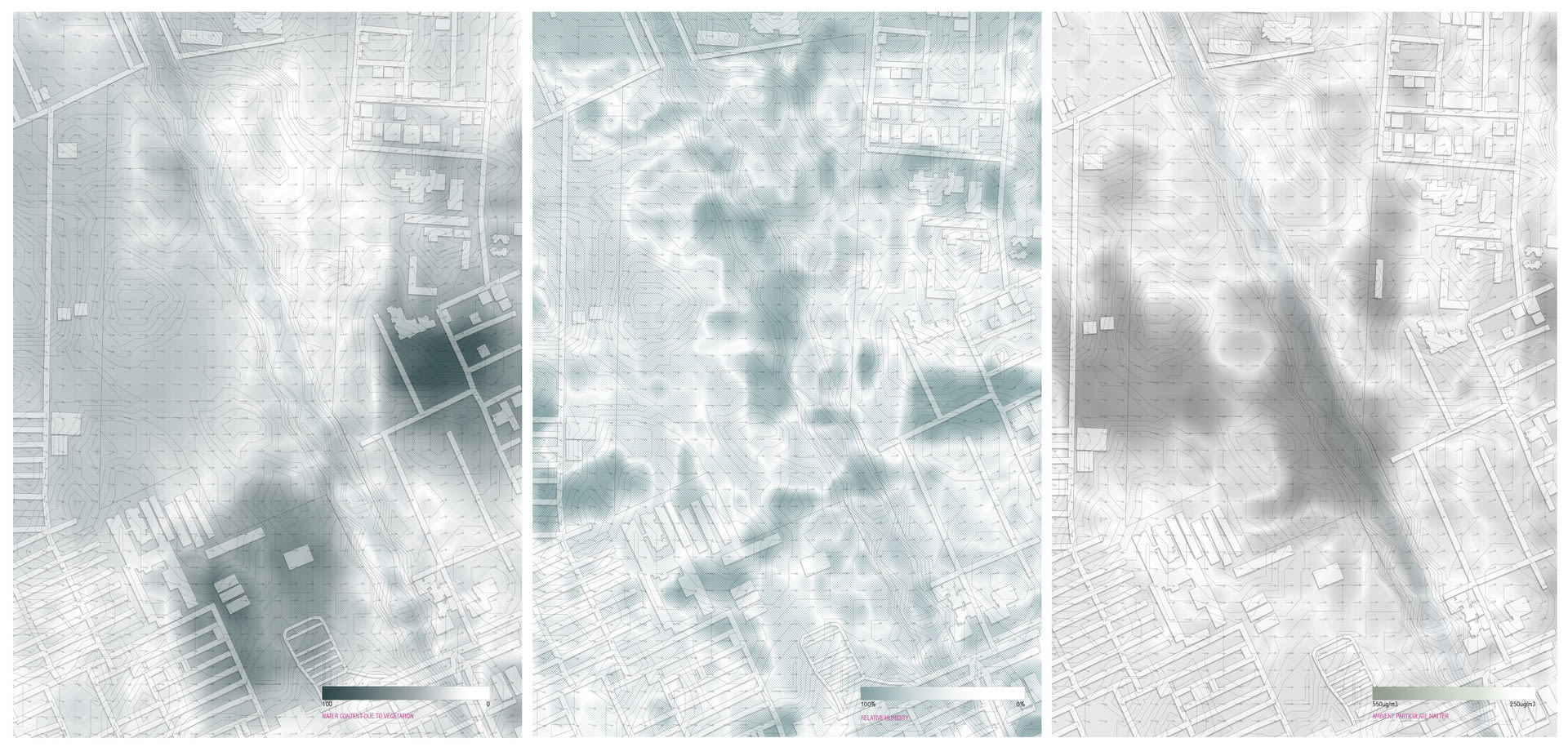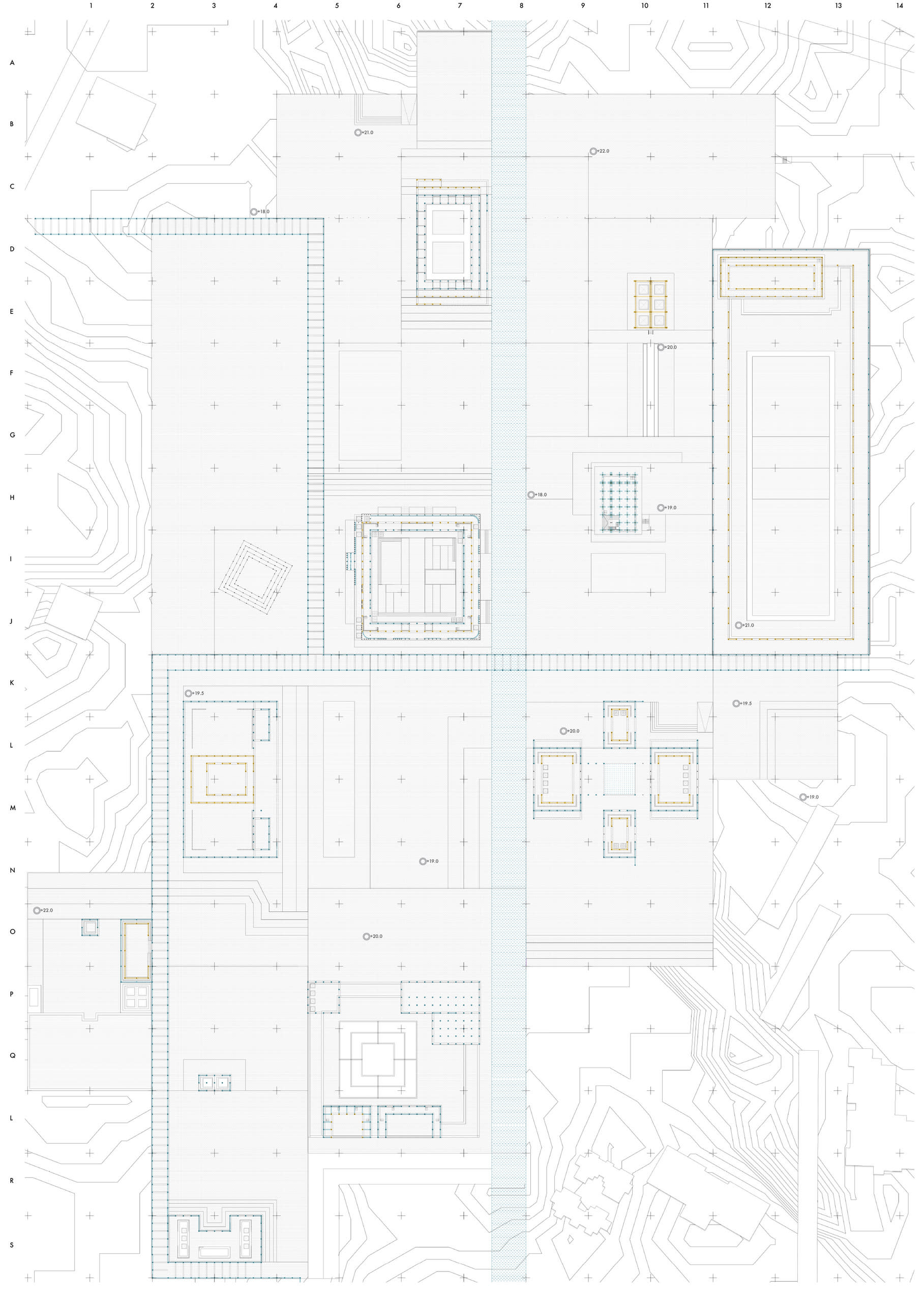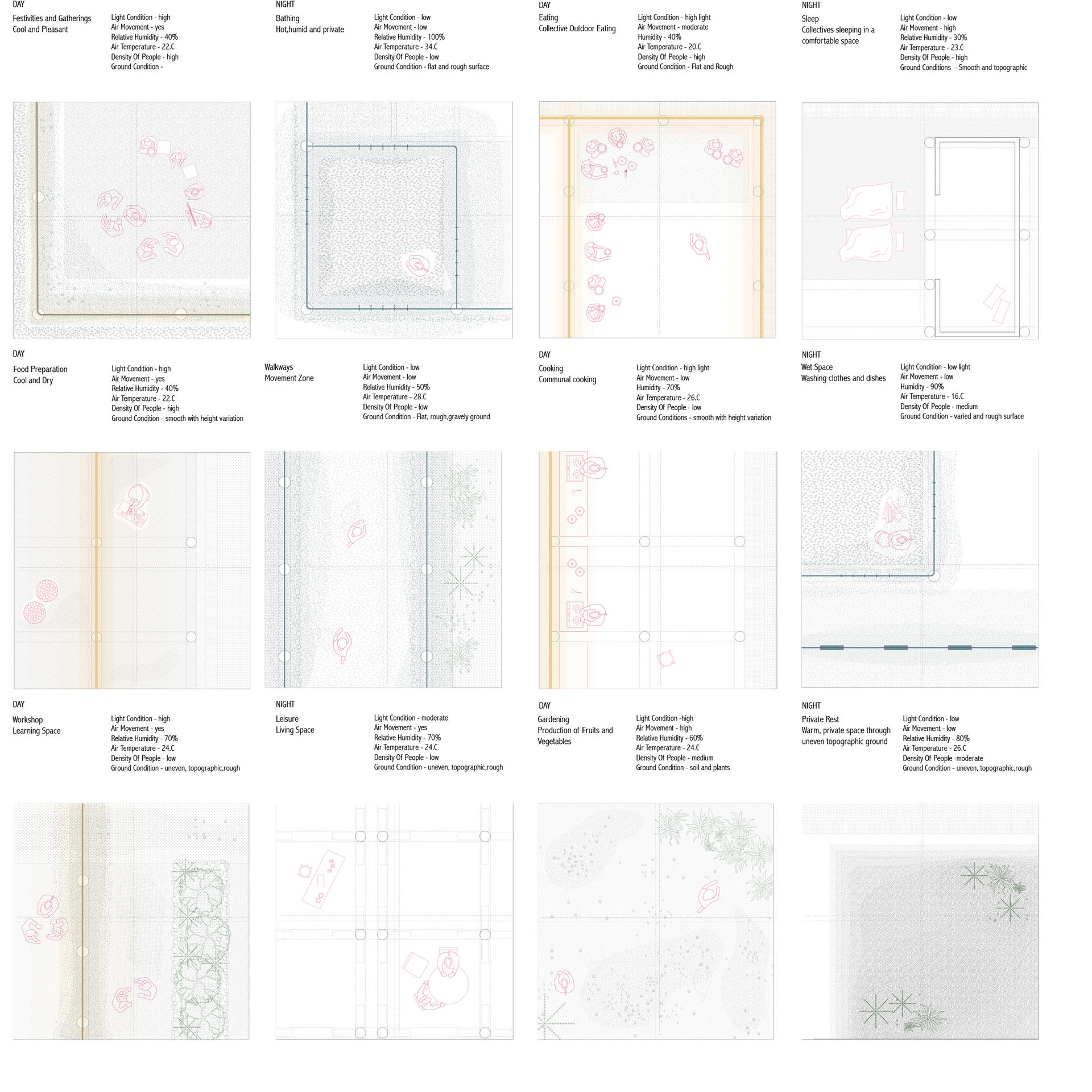The project responds to how women’s cooperatives in New Delhi, India, act as a form of resistance as they go against the existing social norms and help facilitate new ways of collectively living and working together. They work as anti-types as they are different from the original typologies of living and working together. The strategy and forms to sustain this way of living are taboo. The cooperatives are based on the concept of an alternative approach where the people live, learn, work, love, play together.
The majority of Delhi’s working class are daily wage earners and “migrant workers”. Most migrant workers in India are undocumented, work without contracts where they are paid a minimum daily wage. Women-led community kitchens provide food for them. They work in several modes, some cook in large kitchens and deliver across cities, others set up makeshift ones within populated neighborhoods, engaging community volunteers. People often pay what they can afford for such meals.
Distinctive, recognizable forms that allow for the collectivization of people are borrowed from the case studies of the Fatehpur Sikri and Tamil Nadu’s women collective and are juxtaposed with a layer of blurriness that creates a varying experience depending on the climate, humidity, and temperature.
As the boundaries of the building are determined by the volumetric light and spatial conditions, there are no walls, and it proposes a large space to live, play, share, and work with each other through methods of collaboration. As taken from the case studies, the members of the collective live together, the work is shared equally and all decisions are collectively made and the ground is a keyspace for all the activities to take place.
The humidity in the air and volumetric lighting create divisions spatially. The light is used to veil and mask, in turn creating varying degrees of exposure and permeability. The structure of the building itself facilitates and controls the conducting and misting of water.
Physically the space is completely free and open, and the divisions inside are phenomenon-based. Activities such as cooking, open-air tandoors, and bathing contribute to the volumetric light and mist. The layers of volumetric lighting, mist, and pipes are used to create an environment that improves the living condition of the inhabitants.














